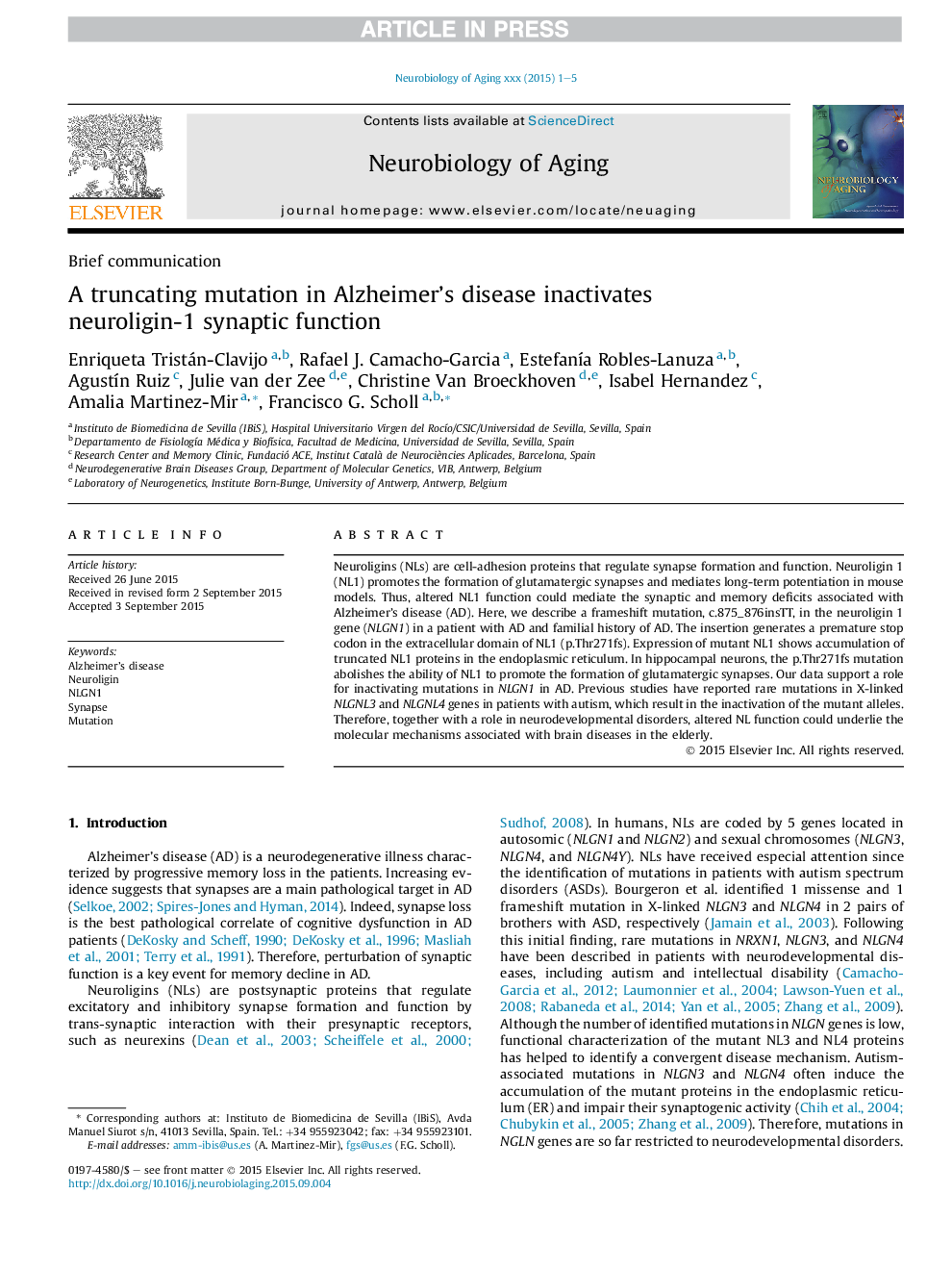| Article ID | Journal | Published Year | Pages | File Type |
|---|---|---|---|---|
| 6803750 | Neurobiology of Aging | 2015 | 5 Pages |
Abstract
Neuroligins (NLs) are cell-adhesion proteins that regulate synapse formation and function. Neuroligin 1 (NL1) promotes the formation of glutamatergic synapses and mediates long-term potentiation in mouse models. Thus, altered NL1 function could mediate the synaptic and memory deficits associated with Alzheimer's disease (AD). Here, we describe a frameshift mutation, c.875_876insTT, in the neuroligin 1 gene (NLGN1) in a patient with AD and familial history of AD. The insertion generates a premature stop codon in the extracellular domain of NL1 (p.Thr271fs). Expression of mutant NL1 shows accumulation of truncated NL1 proteins in the endoplasmic reticulum. In hippocampal neurons, the p.Thr271fs mutation abolishes the ability of NL1 to promote the formation of glutamatergic synapses. Our data support a role for inactivating mutations in NLGN1 in AD. Previous studies have reported rare mutations in X-linked NLGNL3 and NLGNL4 genes in patients with autism, which result in the inactivation of the mutant alleles. Therefore, together with a role in neurodevelopmental disorders, altered NL function could underlie the molecular mechanisms associated with brain diseases in the elderly.
Related Topics
Life Sciences
Biochemistry, Genetics and Molecular Biology
Ageing
Authors
Enriqueta Tristán-Clavijo, Rafael J. Camacho-Garcia, EstefanÃa Robles-Lanuza, AgustÃn Ruiz, Julie van der Zee, Christine Van Broeckhoven, Isabel Hernandez, Amalia Martinez-Mir, Francisco G. Scholl,
